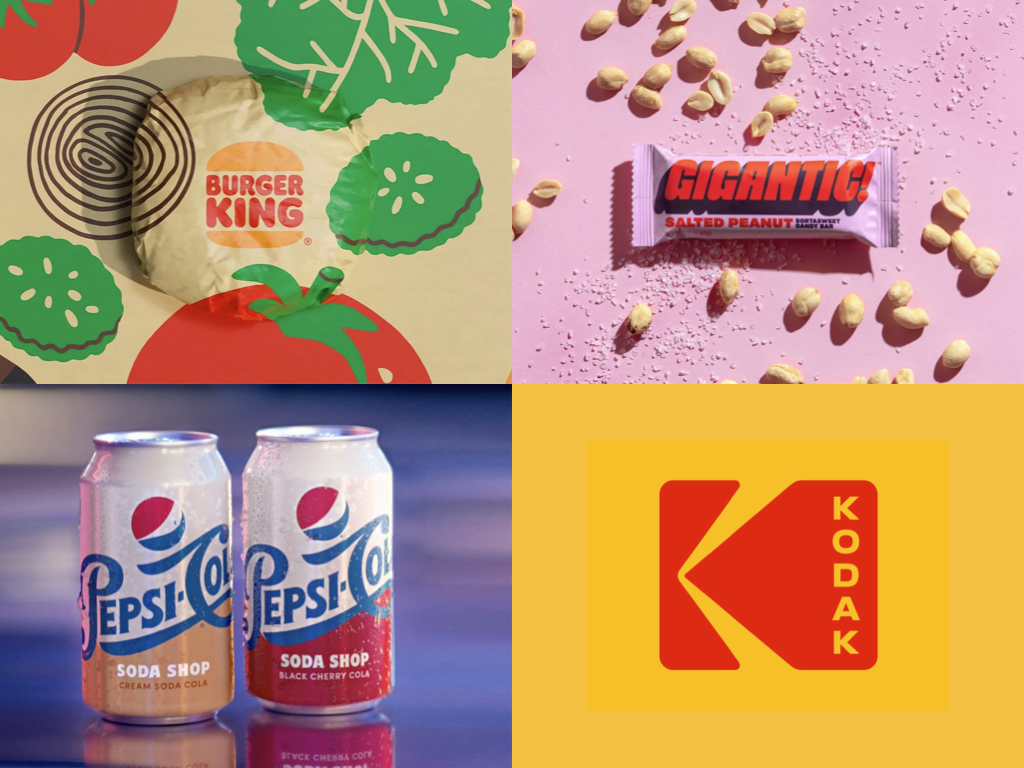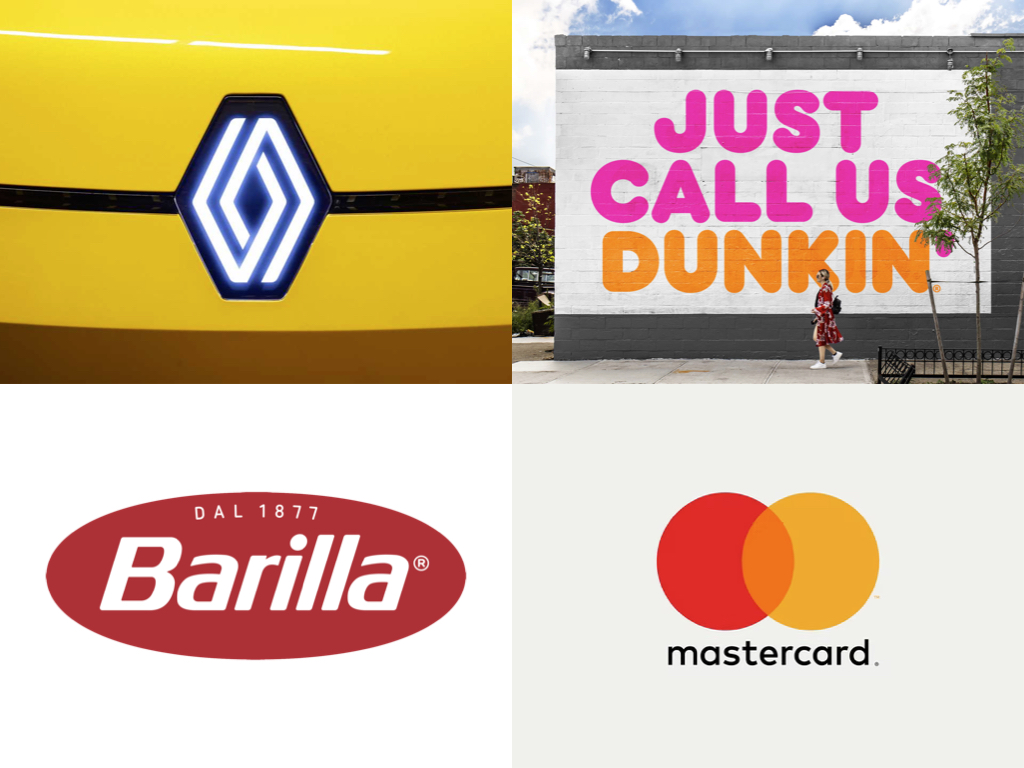The fashion industry runs on the continuous change in taste and aesthetics. A cynical eye could see this as fickle and superficial. Most branding agencies, however (WMH&I included), like to think that they are not subject to any apparent design trend. Don’t we all do what is right for the brand and brief, irrespective of what colours are in vogue?
Before answering that question, please allow me to indulgence in some of my own trend spotting based on recent rebrands.
YEARNING FOR THE PAST
Changes to consumer attitudes can influence brand design. Nostalgia is big business for every generation, and this has only been exacerbated by the pandemic. Fueled by their uncertain future, Millennials and Gen Z worldwide are even more nostalgic than other generations – both for their own childhoods and for the more certain world before they were born. Brands tap into this and visually hark back to a time ‘where things were better’.

SIMPLE IS BEST
Brands have seen a need to update, due to seismic changes in their respective industries, and their responses to these. From car brands that want to be seen as caring for a greener future, to food brands trying to lose their processed past. Simplification is often seen as the answer, to show a more forward-looking brand. The designs shed the frills associated with machine made, polluting, or unhealthy products.

THE SQUIGGLE
Other in vogue similarities seem to be based on pure coincidence. Or am I missing the origin of the recent love for the squiggle? We all know that a brand identity is much more than its logo. The squiggle is a handy tool to draw anything you want. An animated and flexible brand asset that is continuously on the move.

WHAT’S NEXT?
The list of similarities, or trends, in brand design is endless. Yet, what should a brand do? Should it have its finger on the pulse and change with the latest trend? Or should it instead rise above it? To help answer these questions, I called in the help from some esteemed professionals.
The FMCG perspective by Jacques-Henri Brive, Global Head of Brand Marketing at Pernod Ricard.
“Trends are about consumers and preparing for the future. It is key for brands to evolve alongside the consumers, so brand design should take trends into account. Then the question is: which trend will be relevant for my consumer and my brands? This is where agencies can help. Helping identify the right trend to influence my brand design that will ultimately provide my consumers (old and new) with the relevant emotion”.
The B2B perspective by Stephen Herold, Design Principal at IBM iX.
“Brand design is fundamentally about differentiation. Yet, when there are humans designing brands, there will be trends and reactions to those trends, in a continuous cycle. We simply do not work in isolation.
A brand’s identity should not be a reaction to the market, but rather an evolution of its promise and values. This will create strong and enduring brands with loyal customers”.
The retailer’s perspective by Jason Hobson, Creative Director Own Brands at Sobeys.
“Brands should have their finger on the pulse but chasing the latest design trend is a fool’s errand! Design fads come and go, but what has stood the test of time is simplicity. Creatives need to design with simplicity in mind, while building in not only sustainability, but also inclusivity and accessibility. We should design pack formats that help those with dexterity challenges, or easy-to-read labels for visually impaired customers.
Brands can make meaningful change – especially retail brands, as they have such a broad reach due to the size of their portfolio and footprint. This has built loyalty and trust over decades of customer relationship building. Bring in consumer data! I would encourage all designers to lean very heavy into your consumer data. If you do not truly understand your customer, then you will make uninformed design changes. As leveraging the latest recipe from TikTok will only remain surface deep, and your brand will constantly be chasing the latest trend”.
The entrepreneur’s perspective by Jay Jackson, co-founder of Grow.
“A forward-thinking approach to brand design is to get noticed and achieve cut-through. That doesn’t necessarily mean avoiding design trends. It’s more about ensuring you stand apart within your own sector and connect to your customers. I love it when talented designers take inspiration from unexpected places. Why can’t we look at book cover designs for a new spirit brand? Or olive oil designs for a new SaaS company? Ultimately, if something is trending, it’s making an impact. The real challenge is to see what others can’t, and always be singular amongst your competition”.
The creative industry perspective by Jill Marshall, consultant, and former MD of Bloom.
“Strong branding is about understanding a brand’s distinctive brand assets and the role each one plays in establishing recognition, recall and emotional connection. You need to leverage these assets creatively across different touchpoints. No brand can afford to neglect its visual identity. As it might start to look dated or worse, irrelevant.
Review these assets regularly to ensure the brand stays fresh and relevant in its category and the context of consumers’ lives. Brands should evolve with care and consideration, always being clear on the reasons for any change – not just because the new brand manager fancies ‘having a go’ at a redesign, or because of a prevailing trend in typography or colours. To stand out, strong brands zig when others may zag”.
BALANCE OF TIMELESS AND IN TOUCH
A brand needs to embody qualities that makes it timeless yet demonstrate its relevance to today’s society and culture. Design can be a big role in that. Creatives will always need to find that balance to design distinctive fundamentals that rarely change, and around these a framework of visual assets that is flexible to adjust with the times. So, a brand will always be recognised, but it will never feel out of touch.
By Wybe Magermans – Growth Director at WMH&I


You must be logged in to post a comment Login